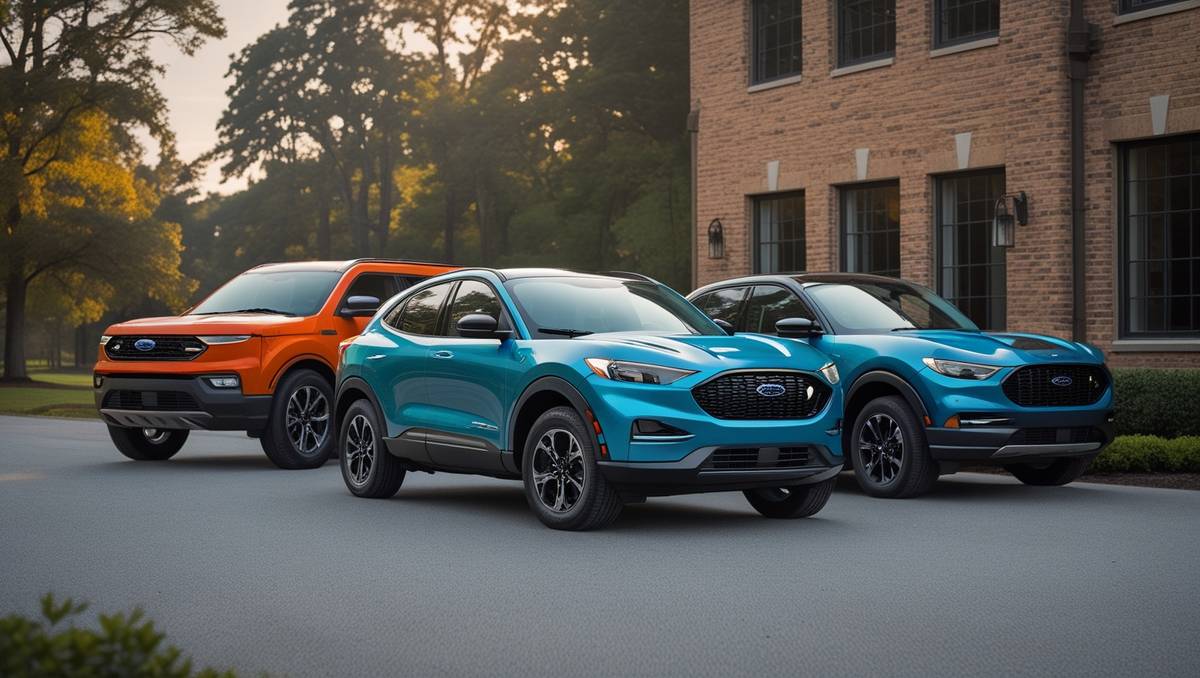
Ford Has Extended Recalls for a Handful of Its Vehicles
Introduction
Ford Motor Company, a trusted name in the automotive world, has recently issued several recalls affecting a significant number of its vehicles. While the phrase “Ford has extended recalls for a handful of its vehicles” might suggest a limited scope, these recalls impact hundreds of thousands of cars and SUVs across various models.
These actions reflect Ford’s commitment to safety and quality, ensuring potential issues are addressed promptly. In this article, we explore the details of these recalls, their impact on consumers, and Ford’s response, while answering common questions to keep you informed.
Recent Ford Recalls
Ford has taken proactive steps to address safety concerns through multiple recalls. Below, we outline the most significant ones affecting its vehicle lineup.
Rearview Camera Software Issue
Ford has recalled nearly 1.1 million vehicles in the United States due to a software glitch affecting rearview cameras. The issue may cause the camera image to delay, freeze, or not display, increasing the risk of crashes, particularly when reversing.
Affected models include the 2021-2024 Bronco, F-150, Edge, 2023-2024 Escape, Corsair, F-250, F-350, F-450, F-550, F-600, 2022-2024 Expedition, Navigator, 2022-2025 Transit, 2021-2023 Mach-E, Lincoln Nautilus, and 2024 Ranger and Mustang. Ford is addressing this with an over-the-air software update, offering a convenient fix for owners.
Mustang Mach-E Battery Issue
Another major recall involves over 316,000 Mustang Mach-E electric vehicles worldwide, with 196,911 in the U.S. A 12-volt battery issue could cause the vehicle to lock out occupants or trap them inside, posing a serious safety risk, especially in extreme weather.
No injuries have been reported, but the potential for harm is significant. Ford is developing a software update to resolve this issue, and dealers have been instructed to halt demonstrations and deliveries until the fix is available.
Other Notable Recalls
Ford has extended recalls for a handful of its vehicles and has also issued recalls for other models. For instance, 30,679 2024 Lincoln Nautilus vehicles face a multimedia module software issue that may cause blank screens, losing critical information like speedometers and warning lights.
Additionally, 192 2022 Ford F-150 Lightning BEVs were recalled due to a tire pressure monitoring system issue stemming from an incomplete prior recall fix. These recalls highlight Ford’s efforts to ensure all vehicles meet stringent safety standards.
| Recall | Affected Models | Number of Vehicles | Issue | Remedy |
| Rearview Camera | 2021-2024 Bronco, F-150, Edge, etc. | 1,075,299 | Camera delay/freezing | Over-the-air software update |
| Mach-E Battery | 2021-2025 Mustang Mach-E | 316,911 (196,911 U.S.) | Battery lockout risk | Software update (in development) |
| Lincoln Nautilus | 2024 Lincoln Nautilus | 30,679 | Blank screens | Software update |
| F-150 Lightning | 2022 F-150 Lightning BEV | 192 | Tire pressure system | Software update |
Why Do Recalls Happen?
Vehicle recalls are a standard practice in the automotive industry, occurring when manufacturers identify defects or safety issues that could endanger drivers, passengers, or others. These issues can range from minor inconveniences, like faulty displays, to critical safety hazards, such as brake or battery failures.
In Ford’s case, recent recalls are largely driven by software issues, which are increasingly common as vehicles incorporate advanced technology. Fortunately, software problems高考
problems can often be fixed remotely via over-the-air updates, making repairs more convenient than hardware fixes.
Recalls are not unique to Ford; they are a routine part of ensuring vehicle safety across the industry. They demonstrate a manufacturer’s responsibility to address issues post-sale, maintaining consumer trust and road safety. While recalls may seem concerning, they are a proactive measure to prevent accidents and ensure reliability.
Impact on Consumers
Recalls can be a mixed experience for vehicle owners. On one hand, they address safety issues, potentially preventing accidents or damage. On the other hand, they can be inconvenient, requiring time for dealership visits or updates.
However, federal law mandates that manufacturers provide free repairs for recalls, including parts, labor, and towing costs. This ensures no financial burden for owners, though scheduling repairs may cause temporary disruptions.
Ford notifies affected owners via mail, providing clear instructions for addressing recalls. Owners should act promptly to avoid driving with unresolved safety issues. For example, a malfunctioning rearview camera or a lockout issue in the Mach-E could pose immediate risks if not fixed.
Ford’s Response to Recalls
Ford is addressing these recalls with efficiency and transparency. For the rearview camera issue, the company is deploying an over-the-air software update, eliminating the need for dealership visits in most cases.
Similarly, the Mach-E battery issue will be resolved with a forthcoming software update, minimizing inconvenience. Ford has extended recalls for a handful of its vehicles and has also halted deliveries and demonstrations of affected Mach-E vehicles to prioritize safety.
To reduce future recalls, Ford is enhancing its quality control processes. The company has faced scrutiny for leading the industry in recalls in recent years, partly due to its large market share.
In response, Ford is investing in advanced technologies and streamlined manufacturing to improve vehicle reliability. These efforts aim to bolster consumer confidence and maintain Ford’s reputation as a trusted automaker.
Conclusion
Ford’s recent recalls, while affecting a significant number of vehicles, demonstrate the company’s commitment to safety and quality. From addressing rearview camera issues in nearly 1.1 million vehicles to fixing battery problems in over 300,000 Mustang Mach-Es, Ford is taking decisive action to protect consumers.
These recalls, though inconvenient, are essential for ensuring vehicle reliability and preventing accidents.
Owners should stay proactive by checking their vehicle’s recall status regularly. Visiting Ford’s website or contacting customer service can help you address any issues quickly. Prioritizing safety ensures that you and your loved ones can drive with confidence.